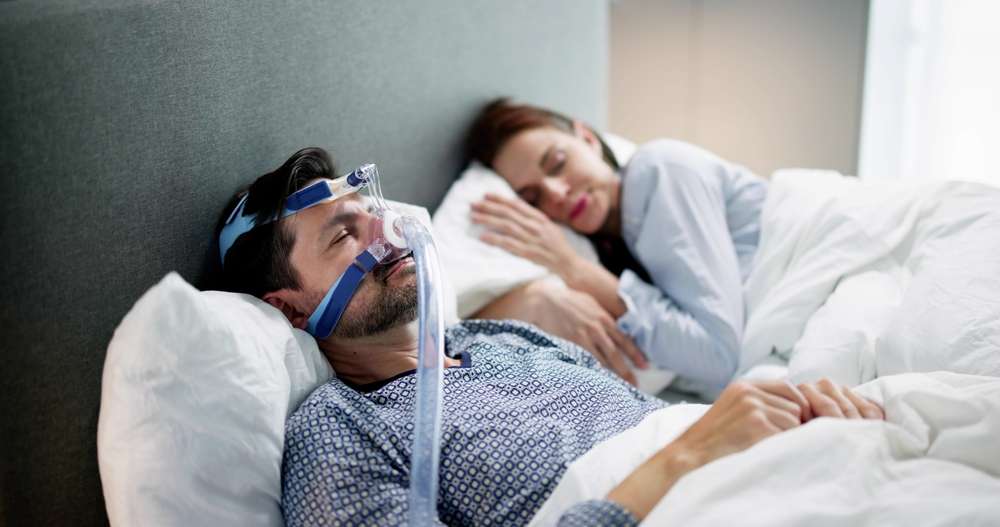Sleep Apnea Explained: Causes, Signs & Treatments Guide
Sleep apnea disrupts breathing during sleep and affects millions, raising risks like high blood pressure, heart disease, diabetes, and daytime tiredness. Learn common symptoms, diagnostic tests, CPAP and other device options, plus lifestyle changes and clinical trials that may help. Discover practical tips and emerging therapies to take control of your sleep health.

Sleep apnea interrupts breathing repeatedly during sleep and can have wide-ranging effects on physical and mental health. Left unmanaged, it contributes to daytime fatigue, a greater chance of accidents, higher blood pressure, cardiovascular strain, insulin resistance and liver abnormalities. Chronic poor sleep can also impair mood, concentration and overall cognitive performance.
How sleep apnea affects health
Those who suffer from sleep apnea often experience excessive daytime sleepiness that undermines work performance and safety. Repeated drops in blood oxygen and surges in blood pressure during sleep place extra stress on the heart and vascular system, increasing the risk of hypertension, arrhythmias and stroke. Metabolic changes tied to fragmented sleep can worsen insulin resistance and contribute to type 2 diabetes. Emotional health is also at stake: interrupted rest is associated with irritability, low mood and difficulty focusing.
Recognizing symptoms and who is at risk
Early recognition improves outcomes. Typical symptoms include loud, chronic snoring; observed pauses in breathing during sleep; abrupt gasping or choking episodes on waking; and morning headaches. People commonly report waking with a dry mouth or a sore throat, trouble staying asleep, and pronounced sleepiness during the day.
Several factors raise the likelihood of developing obstructive sleep apnea:
- Excess body weight and a thick neck circumference
- Anatomical features such as a narrowed airway
- Male sex and older age
- Family history of sleep apnea
- Use of alcohol, sedatives or tranquilizers before bed
- Cigarette smoking
- Chronic nasal congestion or allergies
Being aware of these risks helps guide when to seek assessment.
How sleep apnea is diagnosed and the devices used
Diagnosis usually begins with a sleep study, either performed at home with portable monitoring equipment or conducted overnight in a sleep center using polysomnography. These tests track brain activity, eye movements, heart rate, breathing effort, airflow and blood oxygen levels to confirm interrupted breathing events and measure their severity.
After diagnosis, several device-based treatments are commonly recommended:
- Continuous Positive Airway Pressure (CPAP): Delivers a steady stream of air through a mask to splint the airway open during sleep and is the most widely prescribed therapy for moderate to severe cases.
- Bilevel Positive Airway Pressure (BiPAP): Provides two pressure settings, higher during inhalation and lower during exhalation, which can be more comfortable for some patients.
- Adaptive Servo-Ventilation (ASV): A more sophisticated machine that adapts to a patients breathing pattern and supports regular ventilation in complex cases.
- Oral appliances: Custom dental devices reposition the jaw or tongue to maintain an open airway and are a practical option for mild to moderate sleep apnea or for people who cant tolerate CPAP.
| Device | How it works | Typical cost range |
|---|---|---|
| CPAP machine + mask | Continuous air pressure to keep airway open | $300 - $1,500 (machine + mask, ongoing supply costs) |
| BiPAP / ASV | Variable pressure support for inhalation/exhalation | $800 - $3,000 depending on features |
| Oral appliance | Custom dental device to reposition jaw | $500 - $2,000 (depends on customization) |
| Inspire hypoglossal stimulator | Implanted nerve stimulator to prevent collapse | $15,000 - $30,000+ (surgery and device costs) |
Prices vary by region, provider and insurance coverage. Consult your supplier for exact pricing.
Treatment approaches and ongoing research
Initial care often focuses on lifestyle adjustments: losing excess weight, quitting smoking, avoiding alcohol and sedatives before bedtime, and treating nasal congestion. For many with mild disease, these measures can substantially reduce symptoms.
For persistent or moderate to severe apnea, device therapy is the cornerstone. CPAP remains the gold standard and effectively reduces apnea events when used consistently. Oral appliances are effective for selected patients, particularly those with mild to moderate apnea or who find CPAP intolerable. Surgical options can be considered to remove excess tissue or alter airway anatomy, and specialized procedures can reposition the jaw to enlarge the airway.
A newer implantable option, hypoglossal nerve stimulation (commonly called Inspire therapy), electrically activates muscles that keep the airway open during sleep and can be lifesaving for certain candidates who do not respond to or cannot tolerate conventional therapy.
Research continues across multiple fronts: medications aimed at increasing upper airway muscle tone, combination strategies that pair CPAP with oral appliances, novel surgical reconstructions, improved nerve stimulation devices, and noninvasive approaches using targeted radiofrequency energy. Clinical trials are testing these innovations; patients interested in enrolling should speak with their clinician or search clinicaltrials.gov for opportunities.
Practical steps to improve sleep at home
Alongside medical treatments, several practical habits can ease symptoms and improve sleep quality:
- Work toward a healthy weight through diet and exercise
- Sleep on your side rather than your back to reduce airway collapse
- Elevate the head of the bed or use a wedge pillow to help breathing
- Avoid alcohol and sedatives in the hours before bedtime
- Keep a consistent sleep schedule and practice good sleep hygiene
- Use a humidifier to reduce nasal dryness and congestion
- Exercise regularly to support respiratory and overall health
- Quit smoking to reduce airway inflammation and fluid retention
- Treat allergies and nasal obstruction with appropriate medications
Moving forward
If you suspect sleep apnea, seek medical evaluation. Early diagnosis and proper treatment can greatly reduce health risks and improve daily functioning. Many effective devices and therapies are available, and new treatments are being tested in clinical trials.
This article is for informational purposes only and should not be considered medical advice. Please consult a qualified healthcare professional for personalized guidance and treatment.






